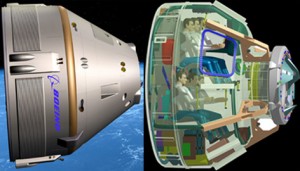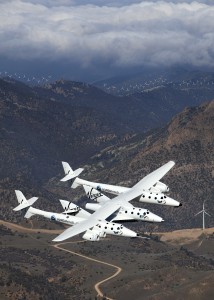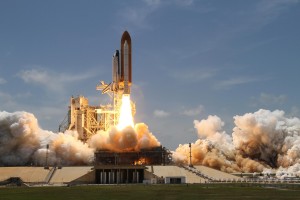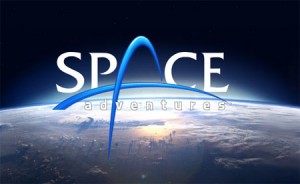
Artist rendering of Boeing's proposed Crew Space Transportation (CST-100) spacecraft. (Boeing image)
The company is vying for a government contract that will allow it to ferry NASA astronauts to the International Space Station (ISS). To do so, Boeing is building the Crew Space Transportation capsule (CST-100), which will contain more seats than needed by NASA. The space agency expects to send astronauts to the ISS in groups of four. The CST-100 will contain seven seats leaving the three remaining seats to be occupied possibly by commercial entities, education-based organizations, governments with no current access to space or private citizens with the desire to be space tourists. Boeing has teamed up with the company Space Adventures, which will coordinate the sale of the available seats.
In an interview with Discovery News, Eric Anderson, the Chairman of Space Adventures stated that “The marketplace has not been constrained by the number of people who wanted to go [to space]. It’s been constrained by access to orbit.
Of course fare on board the capsule is not for those on a tight budget. Unlike the relatively inexpensive $200,000 price tag of a suborbital flight on Virgin Galactic’s SpaceShipTwo, orbital flights on the CST-100 are expected to be priced at something near $40 million dollars. This puts Boeing’s price structure inline with space flights on board a Russian Soyuz rocket. Both Boeing and Space Adventures believe that flights on board the capsule could begin as early as the end of 2015.


 Can’t afford the $200,000 ticket price of a Virgin Galactic suborbital space flight? For a mere $102,000, you can enjoy up to 5 minutes of weightlessness after rocketing to a destination 62 miles (100 kilometers) above the Earth’s surface. The ticket price includes cancelation insurance at the cost of $4000. The complete experience will include a few days training and pre-flight preparation.
Can’t afford the $200,000 ticket price of a Virgin Galactic suborbital space flight? For a mere $102,000, you can enjoy up to 5 minutes of weightlessness after rocketing to a destination 62 miles (100 kilometers) above the Earth’s surface. The ticket price includes cancelation insurance at the cost of $4000. The complete experience will include a few days training and pre-flight preparation.